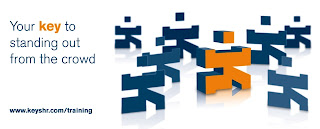Asbestos Awareness Week 2012
24th November to 30th November
It is important to keep working to improve Asbestos Awareness in our communities with the aim of eventually developing a National Awareness program, which could be marketed as a
significant event across Australia. This is starting to occur with the establishment of a dedicated Asbestos Department within the Honourable Bill Shorten’s office of Employment and Workplace Relations.
Despite decades of litigation and lobbying, Australia is still riddled with asbestos and it is time we all helped spread the word - we must stop asbestos exposure, as this is the only sure way to stop asbestos diseases.
Asbestos still lurks in the bathrooms, kitchens, roofs, and garages of two out of three Australian homes built between 1945 and 1989. Asbestos Awareness Week 2012 is from 24th November to 30th November. There is an urgent need for education and awareness and the Society is working closely with the State and Federal Governments to develop programs targeting this. These programs will continue into 2013.
Asbestos Awareness Week Culminates in the Ecumenical Service at St Stephens Cathedral on Friday 30 November so please join with us on that day to pay our respects to those we have lost and support those who currently have asbestos related diseases.
Here are some helpful links for anyone wanting to know more about Asbestos in Queensland.
http://www.deir.qld.gov.au/asbestos/index.htm
http://www.deir.qld.gov.au/workplace/publications/multimedia/uses-applications-asbestos/index.htm
http://www.deir.qld.gov.au/workplace/resources/pdfs/common-location-asbestos-commercial-building.pdf
http://www.deir.qld.gov.au/workplace/resources/pdfs/poster-contain-asbestos-house.pdf
http://www.deir.qld.gov.au/workplace/resources/pdfs/common-location-asbestos-1970s-house.pdf
http://www.asbestosindustry.asn.au/
This message proudly brought to you by
keyshr.com.au/OnlineWhiteCards
keyshr.com.auOnlineAsbestosAwareness
To help with flood damaged homes across Queensland the Queensland Health Department has engaged KeysHR to deliver this approved homeowners course.
keyshr.com.au/OnlinehomeownerDIYasbestosremoval
keyshr.com.auOnlineAsbestosAwareness
To help with flood damaged homes across Queensland the Queensland Health Department has engaged KeysHR to deliver this approved homeowners course.
keyshr.com.au/OnlinehomeownerDIYasbestosremoval























